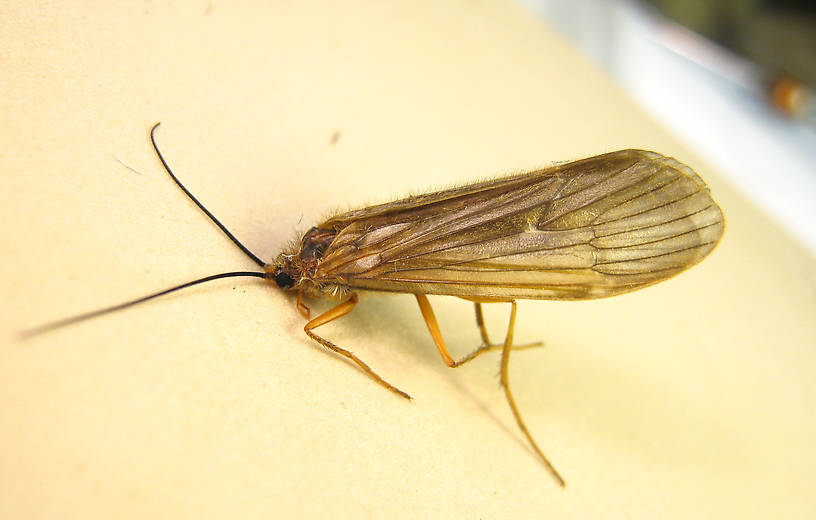
Blue-winged Olives
Baetis
Tiny Baetis mayflies are perhaps the most commonly encountered and imitated by anglers on all American trout streams due to their great abundance, widespread distribution, and trout-friendly emergence habits.
Featured on the forum

This dun emerged from a mature nymph on my desk. Unfortunately its wings didn't perfectly dry out.

Troutnut is a project started in 2003 by salmonid ecologist Jason "Troutnut" Neuswanger to help anglers and
fly tyers unabashedly embrace the entomological side of the sport. Learn more about Troutnut or
support the project for an enhanced experience here.
Caddisfly Species Dicosmoecus atripes (October Caddisflies)
This species was originally very important on its own, but now another important former species, Dicosmoecus jucundus, is considered a synonym of atripes. This extends its range and amplifies its value.
Where & when
This species known to be important in California, Utah, originally, and in Montana and Alaska with the new synonym.In 41 records from GBIF, adults of this species have mostly been collected during August (44%), September (32%), October (12%), and July (7%).
In 37 records from GBIF, this species has been collected at elevations ranging from 1982 to 20669 ft, with an average (median) of 8668 ft.
Species Range
Specimens of the Caddisfly Species Dicosmoecus atripes
1 Female Adult

This specimen is 26 mm.
- Entoman
- Entoman
Start a Discussion of Dicosmoecus atripes
References
- LaFontaine, Gary. 1981. Caddisflies. The Lyons Press.
- Swisher, Doug and Carl Richards. 2000. Selective Trout. The Lyons Press.
Caddisfly Species Dicosmoecus atripes (October Caddisflies)
Species Range
Common Names
Resources
- NatureServe
- Integrated Taxonomic Information System
- Global Biodiversity Information Facility
- Described by Hagen (1875)

